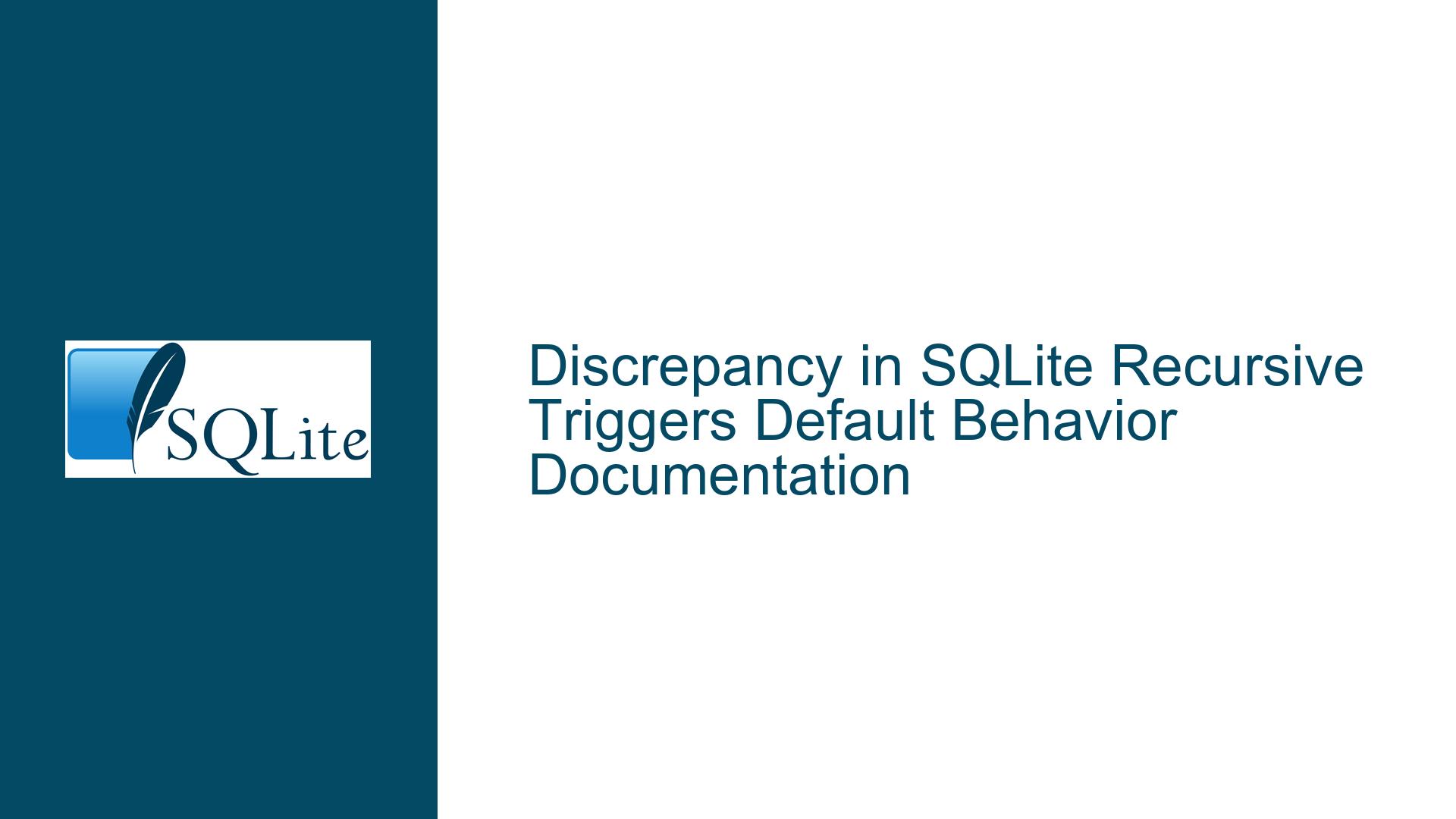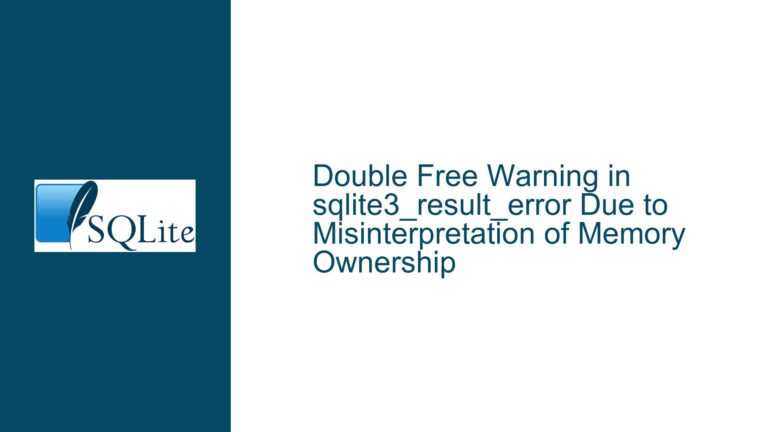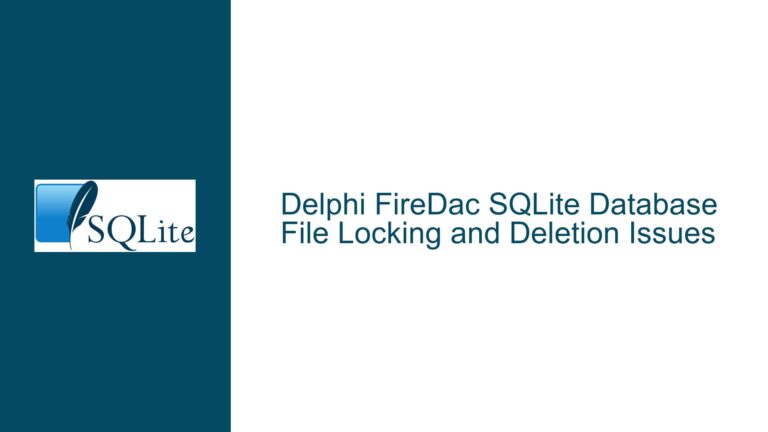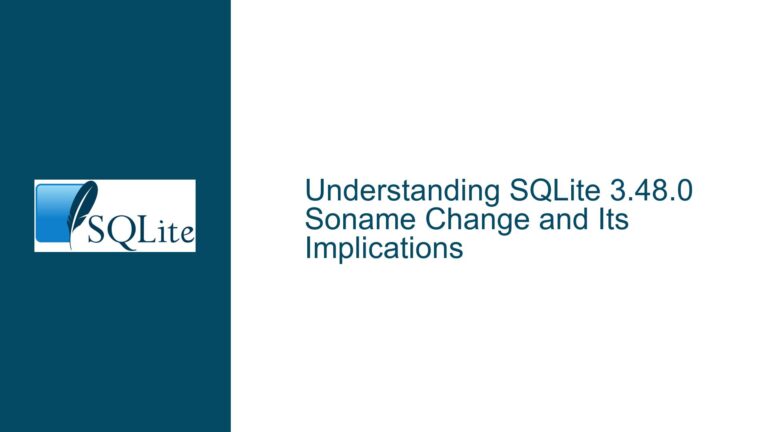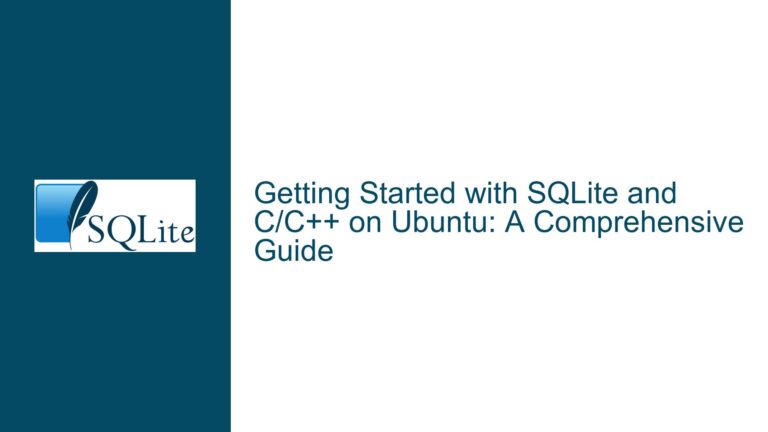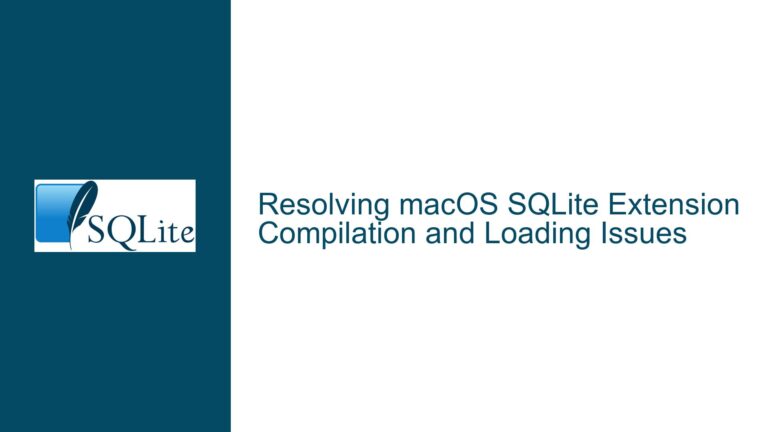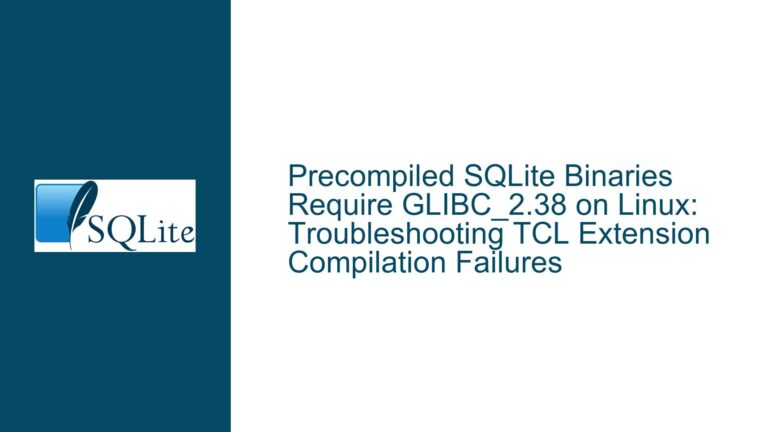Discrepancy in SQLite Recursive Triggers Default Behavior Documentation
SQLite Recursive Triggers Default Setting Mismatch Between Documentation and Code
The core issue revolves around a discrepancy between the SQLite documentation and the actual implementation in the source code regarding the default setting for recursive triggers. According to the SQLite documentation, recursive triggers have been enabled by default since version 3.7.0, which was released on September 11, 2009. This is explicitly stated in the documentation under the "Maximum Depth Of Trigger Recursion" section, which outlines that recursive triggers are enabled by default but can be manually disabled using the PRAGMA recursive_triggers statement. The documentation further clarifies that the SQLITE_MAX_TRIGGER_DEPTH limit, which defaults to 1000, is only meaningful if recursive triggers are enabled.
However, a closer inspection of the SQLite source code, specifically the sqliteInt.h file, reveals a conflicting definition. The code defines the default behavior for recursive triggers using a preprocessor directive: #ifndef SQLITE_DEFAULT_RECURSIVE_TRIGGERS followed by # define SQLITE_DEFAULT_RECURSIVE_TRIGGERS 0. This directive sets the default value for recursive triggers to 0, which effectively disables them by default. This directly contradicts the documentation, which claims that recursive triggers are enabled by default starting from version 3.7.0.
The confusion is further compounded by the documentation for the PRAGMA recursive_triggers statement, which suggests that the default setting for recursive triggers is off but may be changed in the future. This creates an inconsistency not only between the documentation and the code but also within the documentation itself. The question then arises: which source of truth should developers rely on—the official documentation or the actual implementation in the source code?
This discrepancy has significant implications for developers who rely on the default behavior of SQLite when designing their database schemas and writing triggers. If the documentation is incorrect, developers may unknowingly create recursive triggers that do not behave as expected, leading to potential bugs and performance issues. Conversely, if the code is incorrect, it may be a bug that needs to be addressed in future releases of SQLite.
Historical Context and Evolution of Recursive Triggers in SQLite
To fully understand the issue, it is essential to delve into the historical context and evolution of recursive triggers in SQLite. Prior to version 3.6.18, SQLite did not support recursive triggers at all. This limitation was due to the potential for unbounded memory usage and infinite recursion, which could lead to crashes or other undesirable behavior. As a result, any attempt to create a recursive trigger would simply fail.
With the release of version 3.6.18 on September 11, 2009, SQLite introduced support for recursive triggers, but this feature had to be explicitly enabled using the PRAGMA recursive_triggers statement. This cautious approach was likely taken to prevent existing applications from breaking due to unexpected recursive behavior. Developers who wanted to use recursive triggers had to opt-in by setting the PRAGMA recursive_triggers to 1.
In version 3.7.0, released later in 2009, the default behavior for recursive triggers was supposedly changed to enabled. This change was documented in the SQLite documentation, which stated that recursive triggers were now enabled by default but could be manually disabled using the PRAGMA recursive_triggers statement. The documentation also introduced the SQLITE_MAX_TRIGGER_DEPTH limit, which defaults to 1000, to prevent excessive recursion and memory usage.
However, the source code tells a different story. The sqliteInt.h file, which contains the internal definitions and configurations for SQLite, defines the default value for recursive triggers as 0, effectively disabling them by default. This discrepancy suggests that either the documentation is incorrect, or the code has not been updated to reflect the intended default behavior.
The confusion is further exacerbated by the documentation for the PRAGMA recursive_triggers statement, which states that the default setting is off but may be changed in the future. This creates an inconsistency within the documentation itself, as it contradicts the earlier statement that recursive triggers are enabled by default starting from version 3.7.0.
Resolving the Discrepancy: Best Practices and Recommendations
Given the discrepancy between the SQLite documentation and the source code, developers must take a cautious approach when working with recursive triggers. The first step is to verify the actual behavior of recursive triggers in the specific version of SQLite being used. This can be done by querying the PRAGMA recursive_triggers setting immediately after opening a database connection. If the value is 0, recursive triggers are disabled by default, and if the value is 1, they are enabled.
To ensure consistent behavior across different environments and SQLite versions, it is recommended to explicitly set the PRAGMA recursive_triggers value at the beginning of the application or script. This can be done using the following SQL statement:
PRAGMA recursive_triggers = 1; -- Enable recursive triggers
or
PRAGMA recursive_triggers = 0; -- Disable recursive triggers
By explicitly setting the PRAGMA recursive_triggers value, developers can avoid relying on the default behavior, which may differ between documentation and implementation. This approach also makes the code more maintainable and easier to debug, as the behavior of recursive triggers is clearly defined and controlled.
In addition to setting the PRAGMA recursive_triggers value, developers should also consider the SQLITE_MAX_TRIGGER_DEPTH limit, which controls the maximum depth of trigger recursion. The default value is 1000, but this can be adjusted based on the specific requirements of the application. For example, if the application requires deeper recursion, the limit can be increased using the following SQL statement:
PRAGMA SQLITE_MAX_TRIGGER_DEPTH = 2000; -- Increase the recursion depth limit
Conversely, if the application is sensitive to memory usage or performance, the limit can be decreased to prevent excessive recursion. It is important to note that the SQLITE_MAX_TRIGGER_DEPTH limit is only meaningful if recursive triggers are enabled.
Finally, developers should stay informed about updates and changes to the SQLite documentation and source code. The SQLite development team is known for their rigorous testing and commitment to backward compatibility, so any discrepancies between the documentation and the code are likely to be addressed in future releases. By keeping up-to-date with the latest developments, developers can ensure that their applications remain compatible and performant across different versions of SQLite.
In conclusion, the discrepancy between the SQLite documentation and the source code regarding the default behavior of recursive triggers is a significant issue that requires careful attention from developers. By verifying the actual behavior, explicitly setting the PRAGMA recursive_triggers value, and staying informed about updates, developers can avoid potential pitfalls and ensure that their applications behave as expected.
